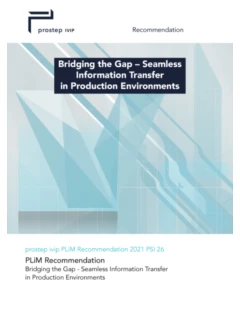PSI-26 12/2021 - PLiM Recommendation 2021
Format: PDF (29 Seiten)
Sprache: EN
Erscheinungsdatum:
12.
2021
 Preview
Preview
Download
Projektgruppe: PLIM
Abstract
The demand for customized products, shorter product lifecycles and cost pressures require increased efficiency and flexibility in the development and operation of production systems, which are becoming increasingly complex. Digital tools and models are being used for end-to-end model-based engineering in this context. Exploitation of their full potential is currently being hindered by discontinuities in the flow of data and information, e.g. during collaboration between different internal and external departments, which leads to high subsequent costs. The evaluation of a recent survey indicated a significant impact on projects in terms of material and time. The apparent lack of data standards underscores industry's pressing need for the information model being put forward. Continued media discontinuities in the companies' data management systems, however, make it imperative that a universal information model, which includes products, processes and resources (PPR), be standardized.
Companies, however, often make insufficient use of current standard models, due in large part to their strongly generic character, and users struggle in the face of their abstraction and complexity. The prostep ivip Association's Production Lifecycle Information Management (PLIM) group has developed an application-related data model based on two different industrial use cases. Unlike existing standards, this model does not fully cover all use cases, but it is more clearly structured and more practice oriented. Transfer to ISA-95 and export to a generic exchange format (AML) as an existing industrial data interface demonstrated that the information model can also be used for tool-unspecific applications. With focus placed on achieving a high level of usability, it will be necessary in the future to investigate whether additional use cases could be used to derive a standard that a large number of companies could integrate.

